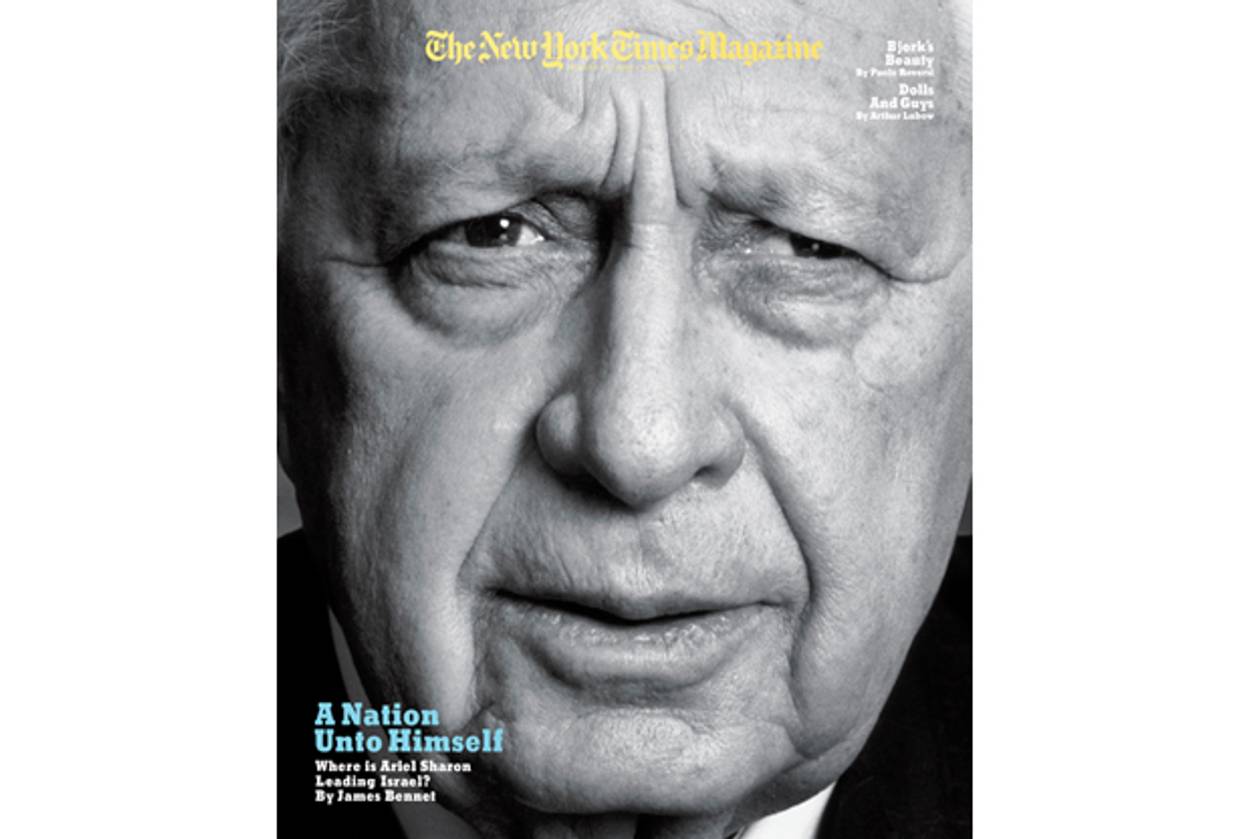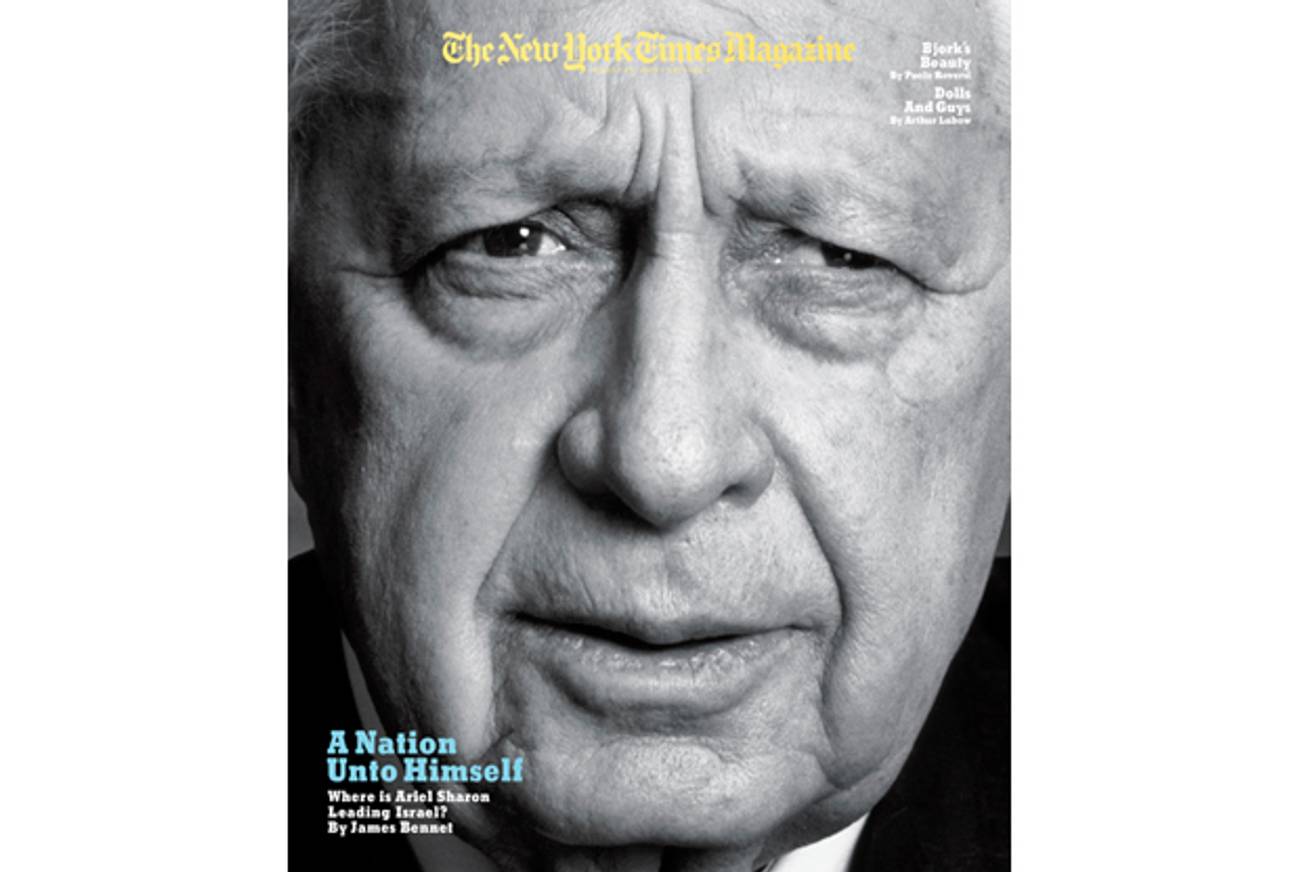Photographing Ariel Sharon
Gillian Laub remembers her portrait sessions with the late prime minister




In July 2004, I got a call from the New York Times Magazine asking me to photograph Ariel Sharon for an upcoming cover story. The writer, James Bennet, had been working on the piece for a year, and I was told that securing a formal portrait sitting with the prime minister at the time was a real coup. I had to leave on the next flight out, so I took the overnight flight on a Wednesday and arrived early morning Thursday. The portrait was set for that afternoon. I hired a local assistant who I had never met before to pick me up from Ben Gurion airport and then drive us to the Prime Minister’s office in Jerusalem.
When I arrived, it was off the charts hot. I decided I needed to wear whatever I would sweat least in, and because things in Israel are generally pretty casual, I figured it would be okay to wear my usual summer uniform—a T-shirt and a denim skirt. We arrived in Jerusalem with enough time to go through security before our 3 p.m. appointment. But while we were going through the motions at the security checkpoint, a loud alarm sounded. It was a particularly tense time in Israel. Sharon was preparing for the Gaza pullout so he was not just an enemy of Palestinians, he was also under the threat of many Israelis who felt betrayed by him. I suddenly thought, Holy shit, could it have been my assistant?
It turned out it was me—or rather, my equipment—that prompted the bomb scare. After blowing way too many fuses, I never like to be dependent on anybody’s electricity, so I only use portable lights, and each battery weighs about ten pounds and looks like a lead brick. And when they ran a background check on me, they saw I’d been in Ramallah and Nablus two months before. I was interrogated for an hour.
When I finally made it through, I was met by Sharon’s press secretary, Dorit, who took one look at me, and said, “I am so sorry, but you simply can’t meet the prime minister dressed like that.” I almost passed out. My suitcase was at a friend’s apartment in Tel Aviv, and there was no way for me to leave the premises to buy something and go back through security in time to make the shoot. Dorit went to see if she had a spare suit in her car that I could borrow, but came back empty-handed. I felt like I was watching a train get derailed. My film was supposed to be on the desk of my editor in New York by Monday. The next day was Friday—Shabbat. Not possible. Also not Saturday. Maybe, maybe Sunday.
I can’t describe the sick feeling I had for the next two days. I went back to Tel Aviv in a state of complete shock. Saturday evening, after many phone calls back and forth with Dorit, I got the green light to return on Sunday morning. I got to security at 7 a.m. dressed like a religious person. The shoot was so fast, with 20 people breathing down my neck, telling me what angle I could and couldn’t shoot from. But the man behind the desk, who so many people feared, seemed to me like a sweet teddy bear a bit uncomfortable in his own body. There was something so strangely familiar about him, and the minute I looked through the lens it felt like his eyes told all the stories I didn’t have time to ask him myself. I paid a courier a ridiculous amount of money to get the film back to New York in time for my deadline, and two weeks later, the image was on the cover of the Times Magazine.
Almost a year later, in the spring of 2005, I received a call from Time magazine to photograph Sharon again. This time I went appropriately dressed, covered from head to toe! Dorit, the press secretary, greeted me with a big hug—“The girl with the short skirt!” This time, I had time to talk to Sharon. He asked me why I hadn’t made aliyah, and then asked if I was married or single. I told him I was single. “I have a great shidduch for you here in Israel,” he said. “Come move here. This is where you belong.”
The next day, Dorit called to say that the Prime Minister wanted me to join him for Yom Ha’atzmaut ceremonies. I postponed my flight and spent an unforgettable day with Sharon on Mt. Herzl.
I can remember where I was exactly when I heard the news of Sharon’s stroke, less than a year later—having dinner with my parents at a restaurant in Manhattan. My father told me what had happened, and it weirdly felt like my father was telling me news about one of our relatives.
Gillian Laub is a photographer who contributes regularly to the New York Times Magazine and Time magazine, among other publications. She is currently working on a project centered on the American South which will be a documentary film, her next book, and traveling exhibition.
Gillian Laub is a photographer whose work regularly appears in the New York Times Magazine and Time magazine, among other publications. She is currently working on a project centered on the American South which will be a documentary film, her next book, and traveling exhibition.